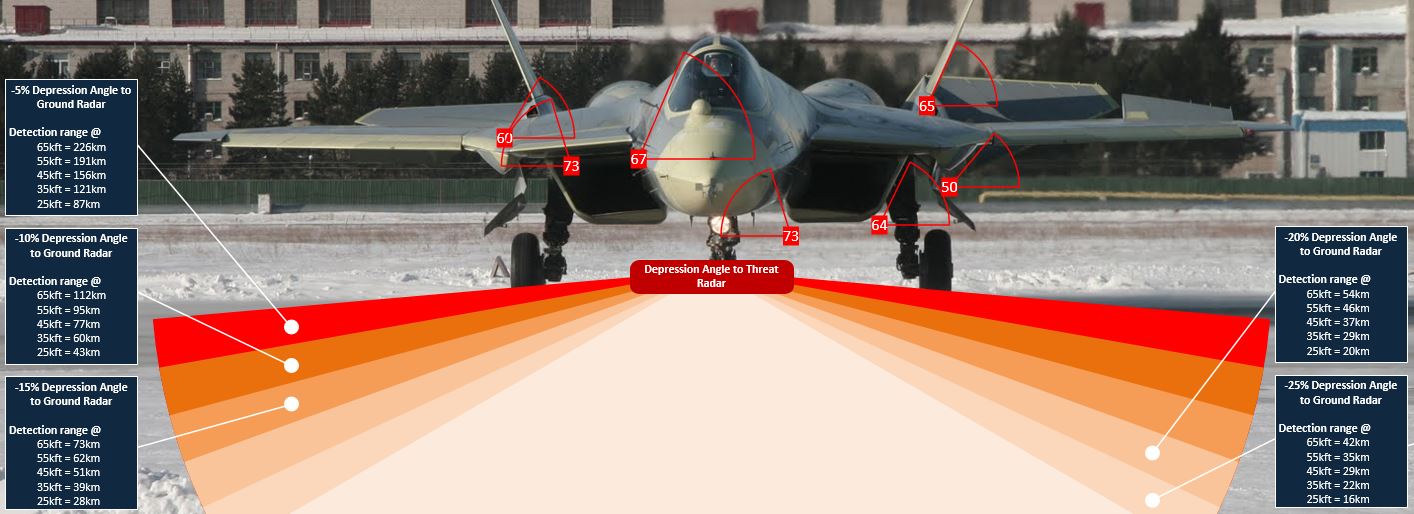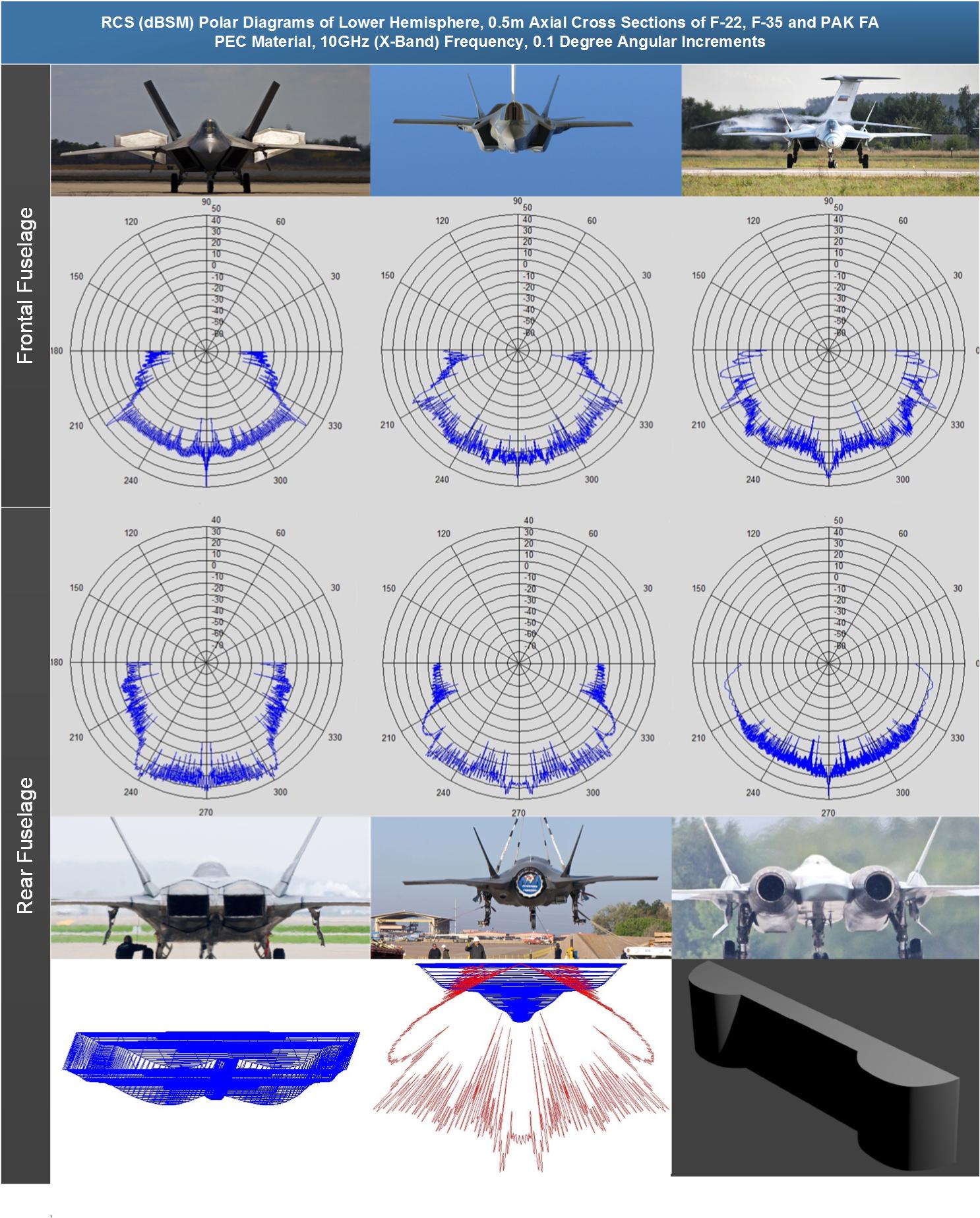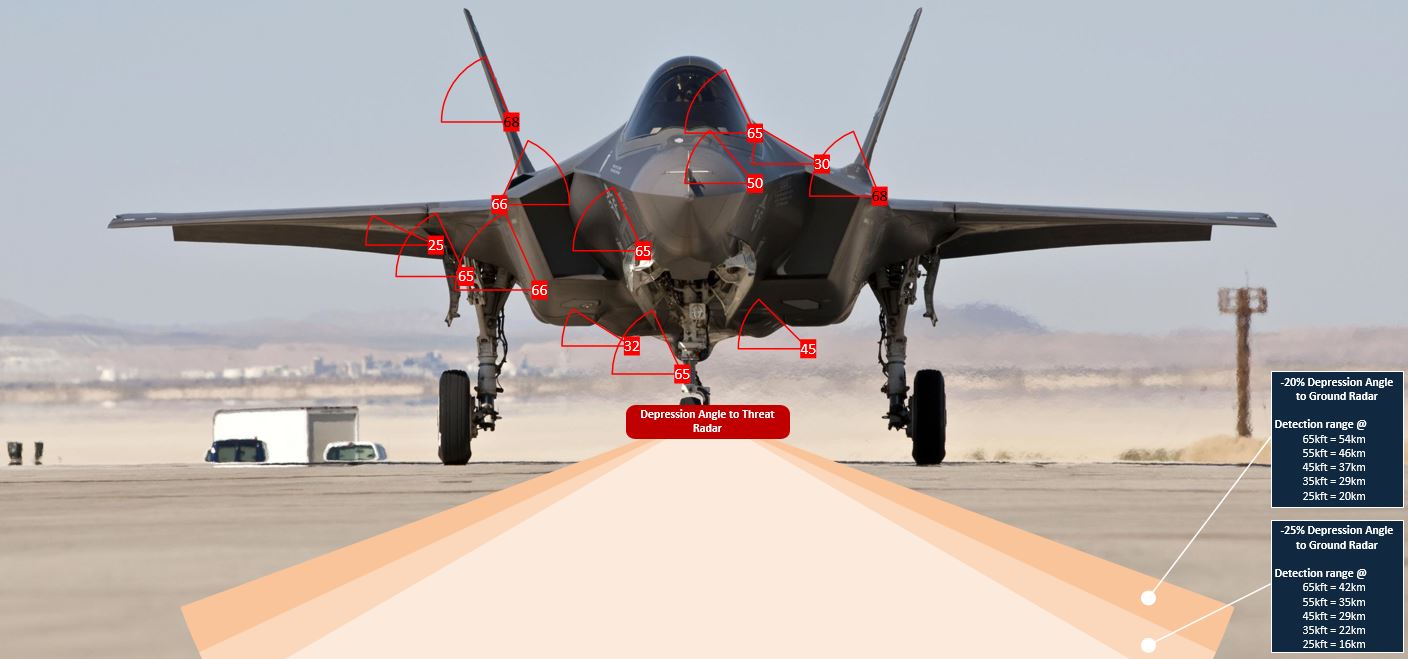Kopp never did RCS modelling of the F-35, when I spoke to him he said it was because the university funding it wasn't going to pay for a third project. He certainly did do the Su-57 and J-20 though, and when one ignores the noise of his skewed conclusions on the F-35 which completely contradict his data results, the analysis of the Su-57 specifically is damning.
http://www.ausairpower.net/APA-2012-03.html
Basically, as per the RCS results from Kopp's simulation, the RCS of the Su-57 is highly problematic. His article mentions the 6 lobe characteristics of the aircraft's side aspect. Given its high operating altitude, its numerous RCS lobes from it's side angles expose it to enemy fire for extended periods of time.
What Kopp doesn't analyse in sufficient detail in his article is what the impacts of lobe A and B in the chart above have on the aircraft's ability to remain undetected. At high altitude, RCS lobe located high on the aircraft (such as A and B) result in the lobe extending further out to the horizon (the higher the aircraft, the further out they extend) meaning radars can detect these lobes at longer ranges than aircraft with lobes situated much lower due to consistent surface angling.


As the lobes also spread out horizontally in a 10 degree arc, a lobe that is detected from range takes much longer to pass over the radar, meaning the target aircraft can be tracked for a much longer period of time.

Image shows how far the highest lobe projects out to for: (top to bottom)
a) F-35 at 36k ft
b) F-22 at 50k ft
c) F-35 at 50k ft
d) Su-57 at 50k ft
Subsequently, networked launchers can fire from greater distances to intercept an aircraft which has lobes that take a long time to sweep over the engagement radars. The image below shows the possible firing distance from launchers to the intercept a pair of aircraft that have their farthest reaching lobe detected from the side aspect from maximum range. The model assumes a missile with a maximum speed of M4 and the Minizap tool was used to model the flight time.
The aircraft on the left is the F-35 flying at M0.8, 36,000ft based on its highest lobe being located 25 degrees below vertical. The right aircraft is the Su-57 supercruising at M1.5, 50,000ft and it's highest lobe is located less than 5 degrees below vertical (the engine nacelles).

As can be seen, the length of time the aircraft is exposed from long range greatly impacts the length of time an IADS has to react to the aircraft.
Below is my own RCS modelling tests of the equivalent cross sections of the side aspects of 3 aircraft. Created by modelling the the angles of the aircraft based on data from numerous sources. All models were built to scale and all represent 0.5m lateral cross sections of the 3 aircraft. The results on the lobe placements are exactly the same as Kopp's findings. While the RCSs don't indicate the actual aircraft RCSs and are all based on exactly the same materials used, these give a reasonable indication of side lobe placement (as does Kopp's analysis, though he never modelled the F-35 nor the F-22).

Finally, the lobe placement on the F-35 for comparison, showing lobe observability range at various altitudes. You can see that strict adherence to set angles makes all the difference.







 on the other hand, even at the dawn of its career, suffers from fundamental limitations of the base design which are already manifest and inflict unacceptable penalties, if not retrograde performance upon its hapless operators.
on the other hand, even at the dawn of its career, suffers from fundamental limitations of the base design which are already manifest and inflict unacceptable penalties, if not retrograde performance upon its hapless operators.








